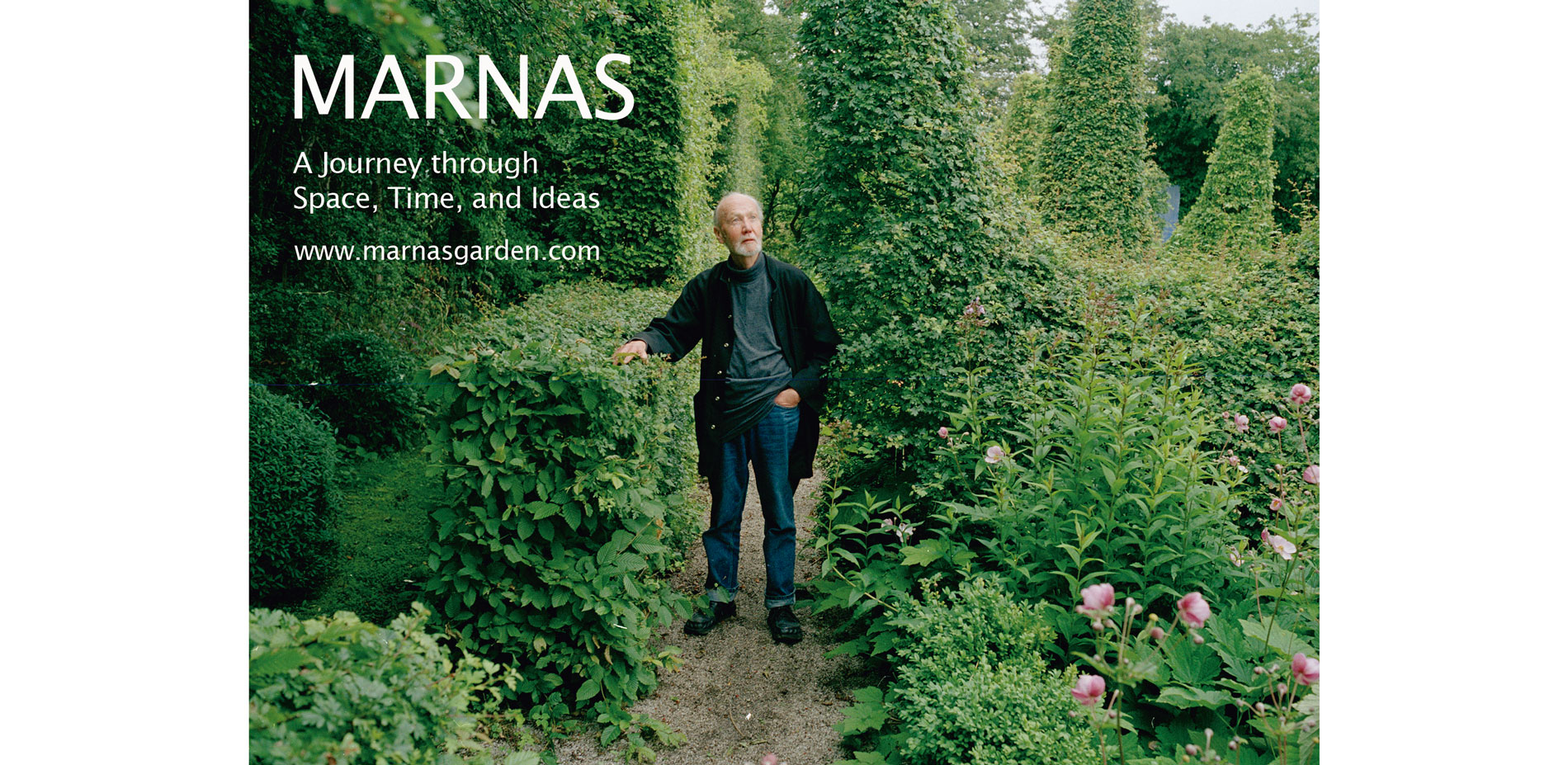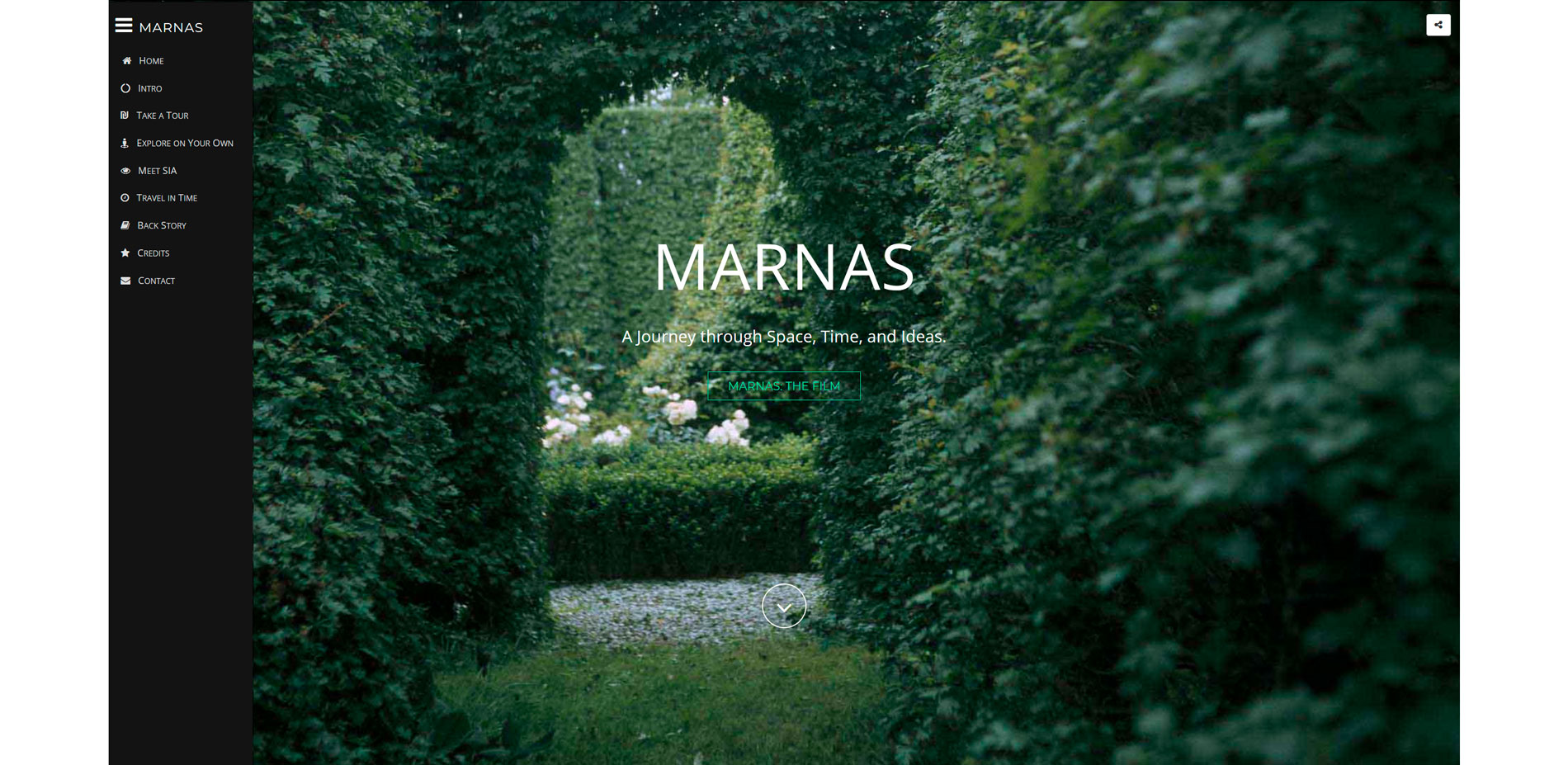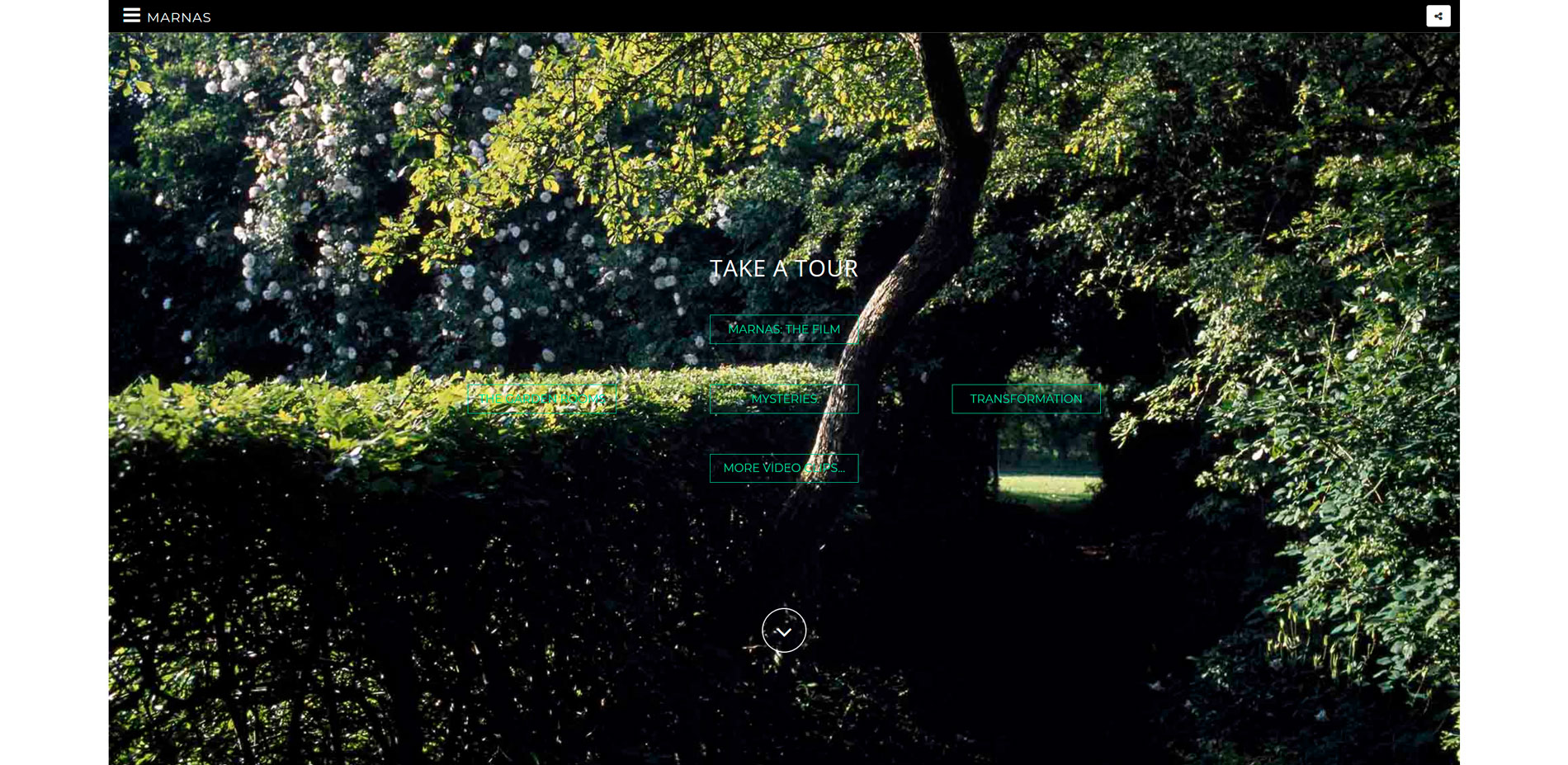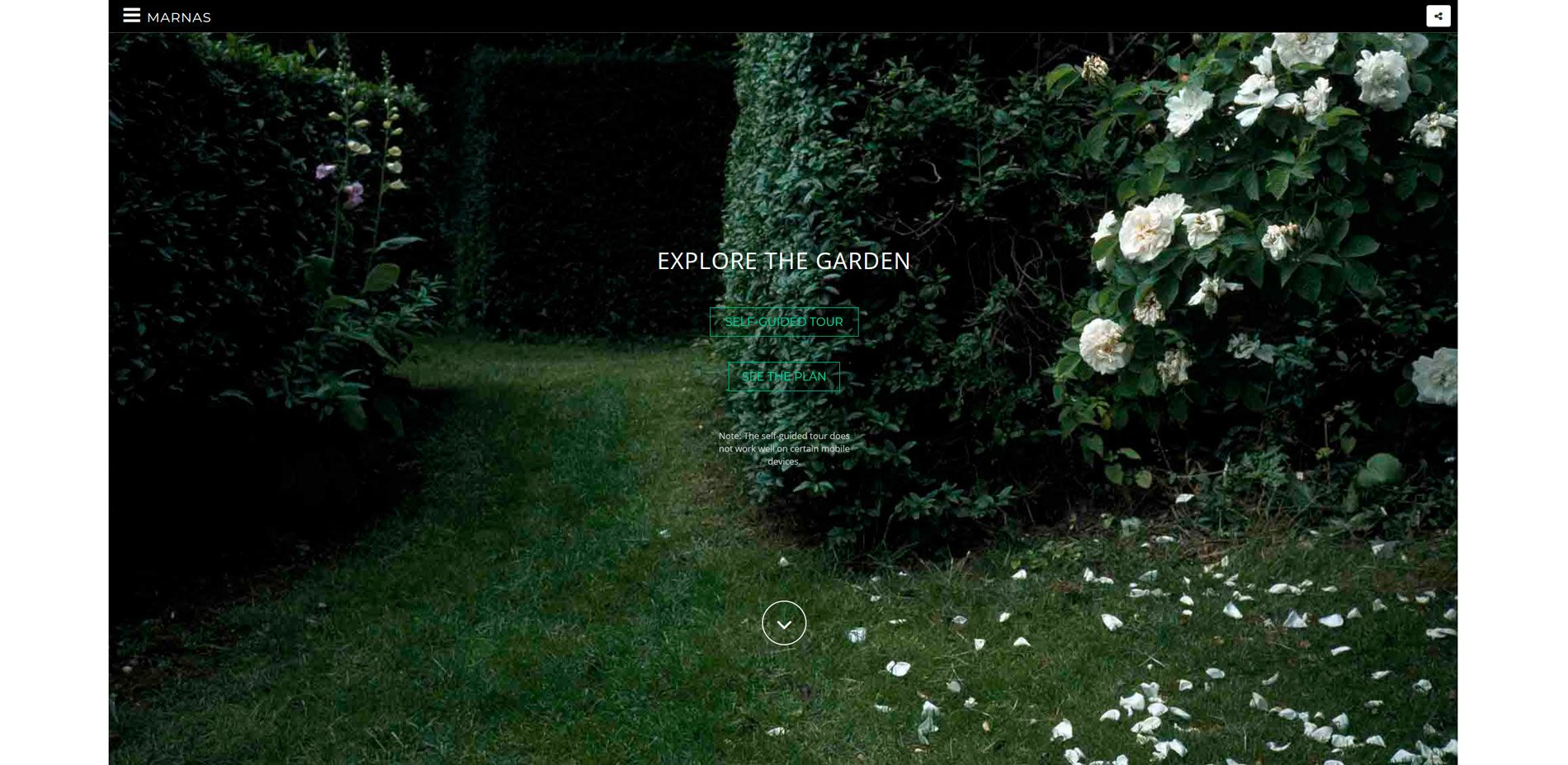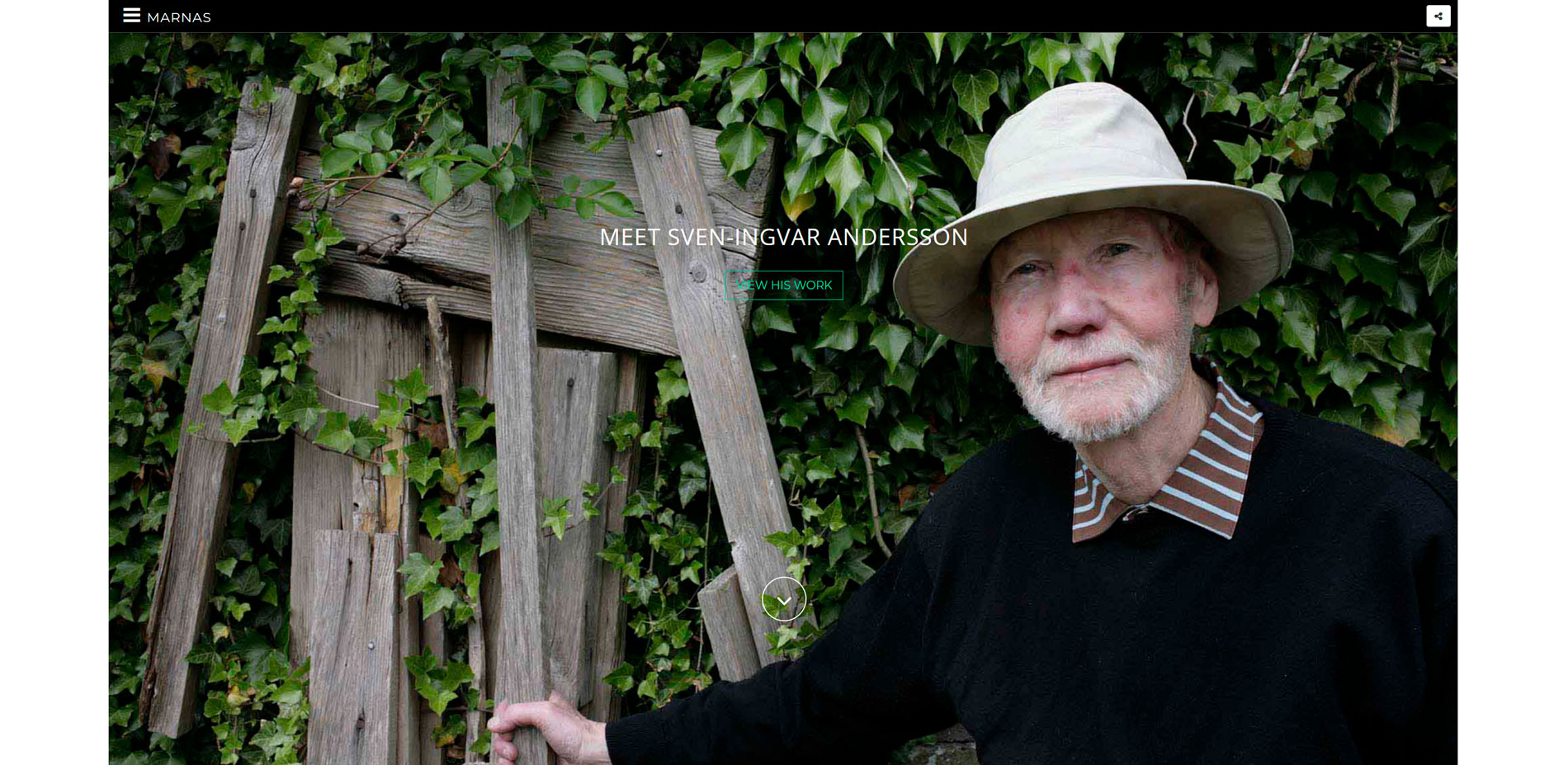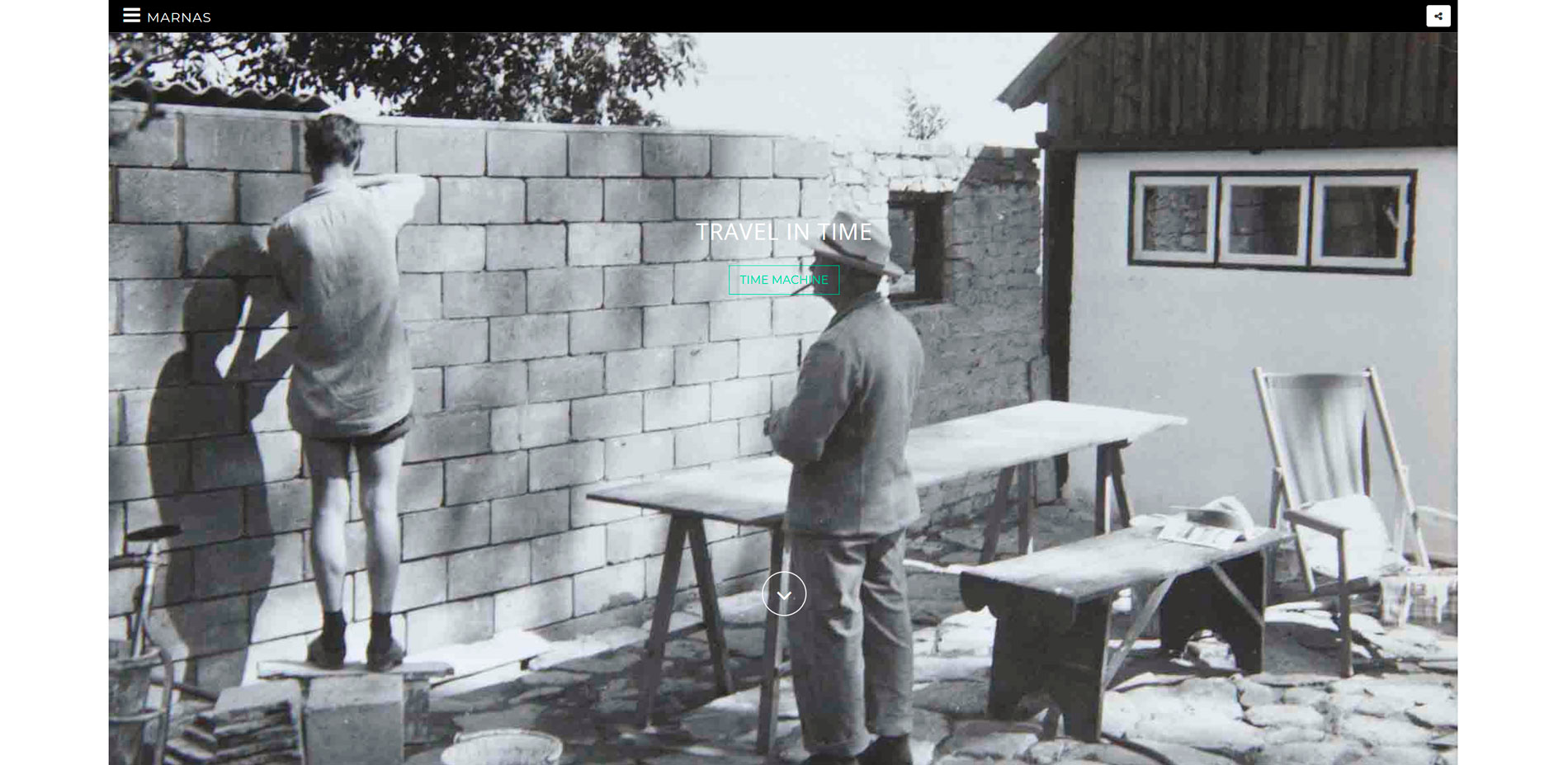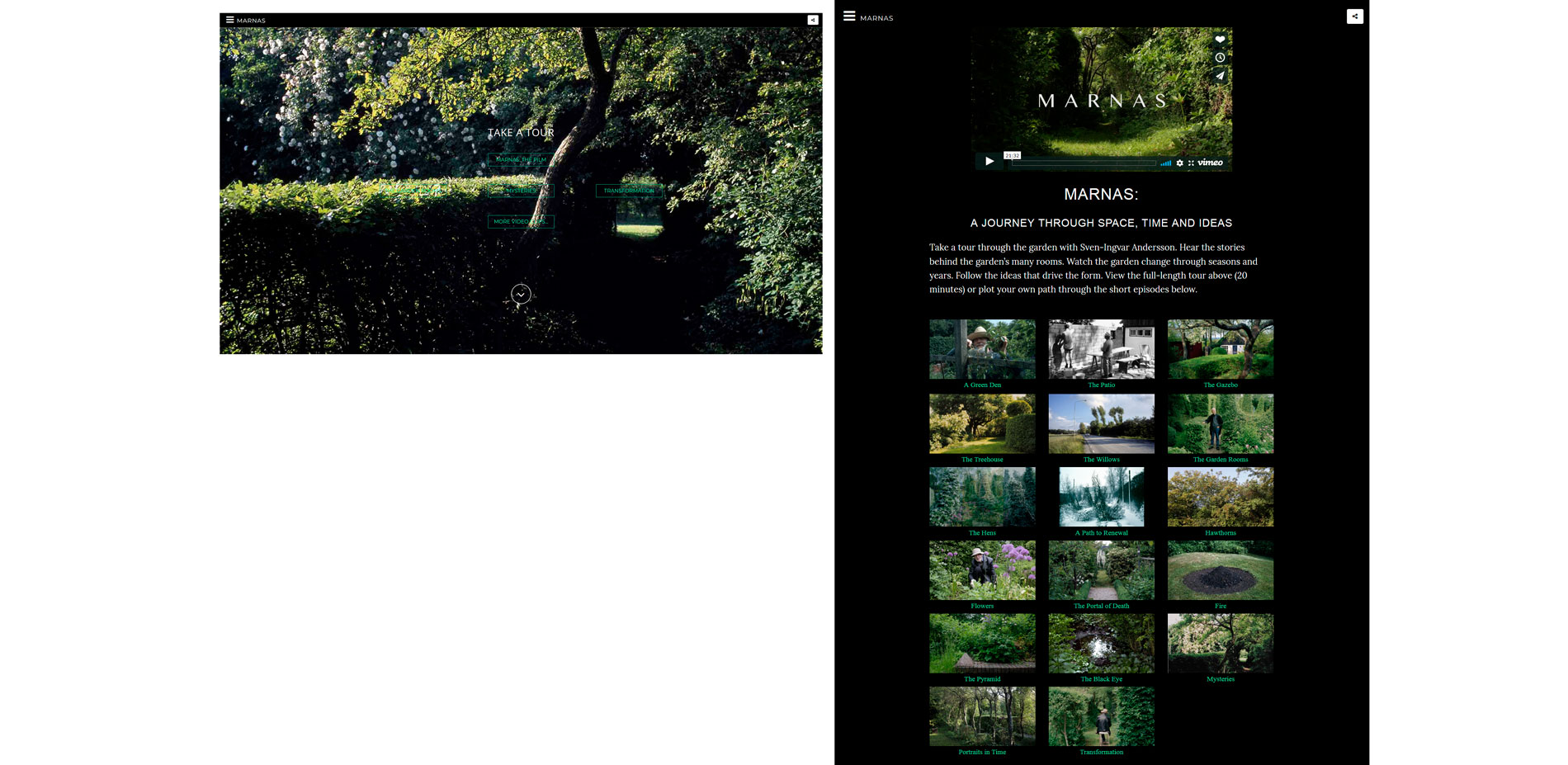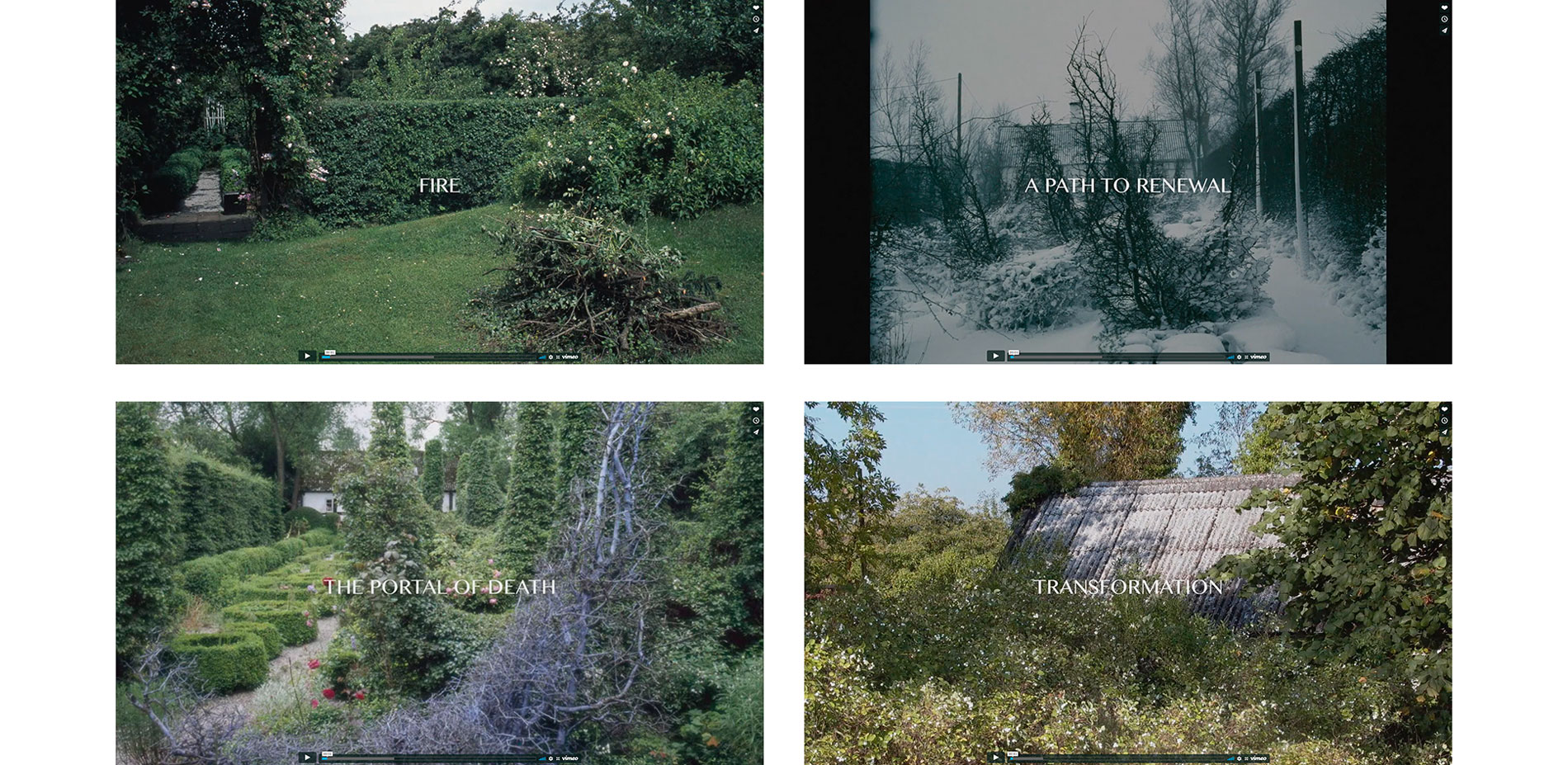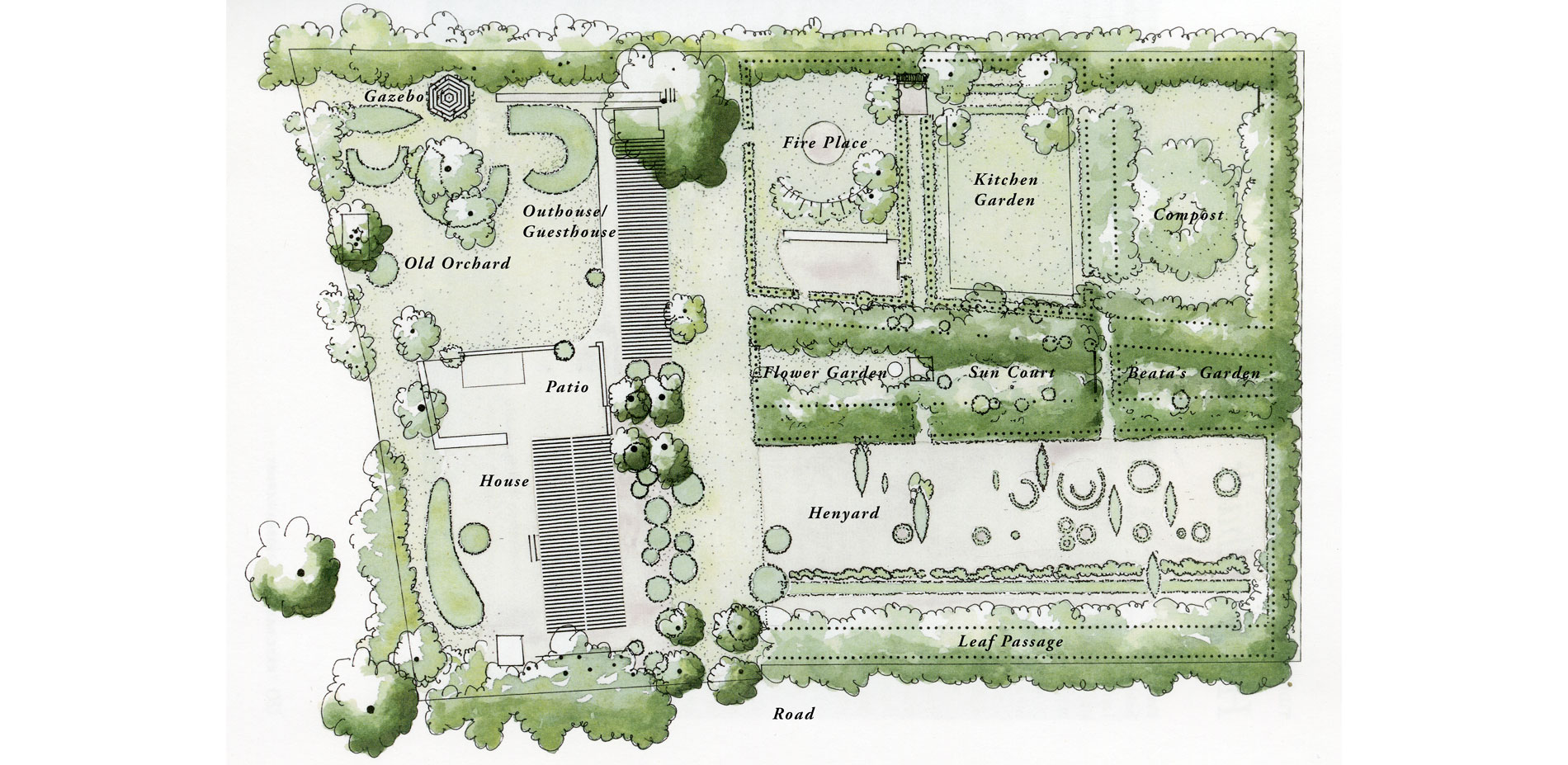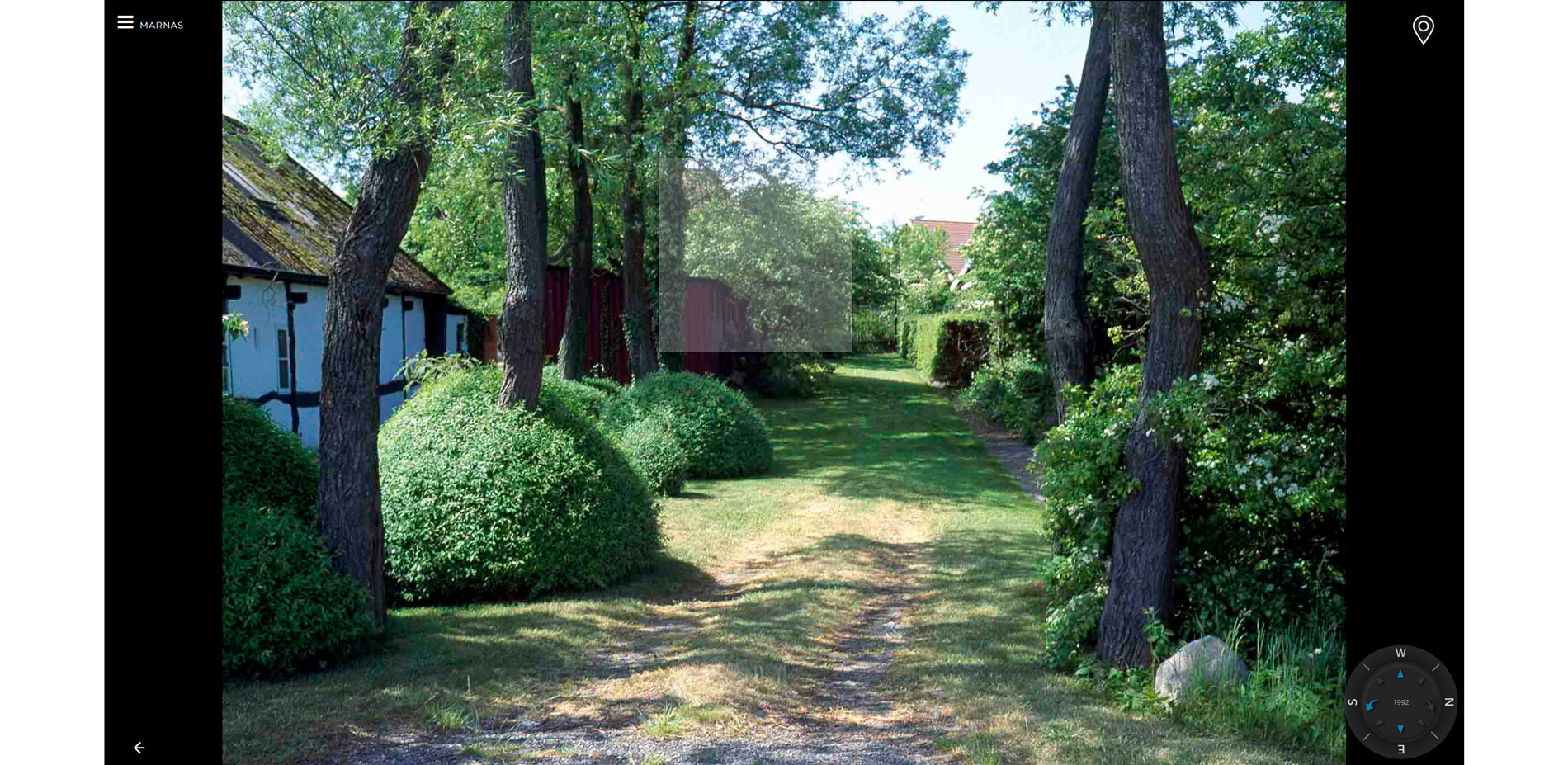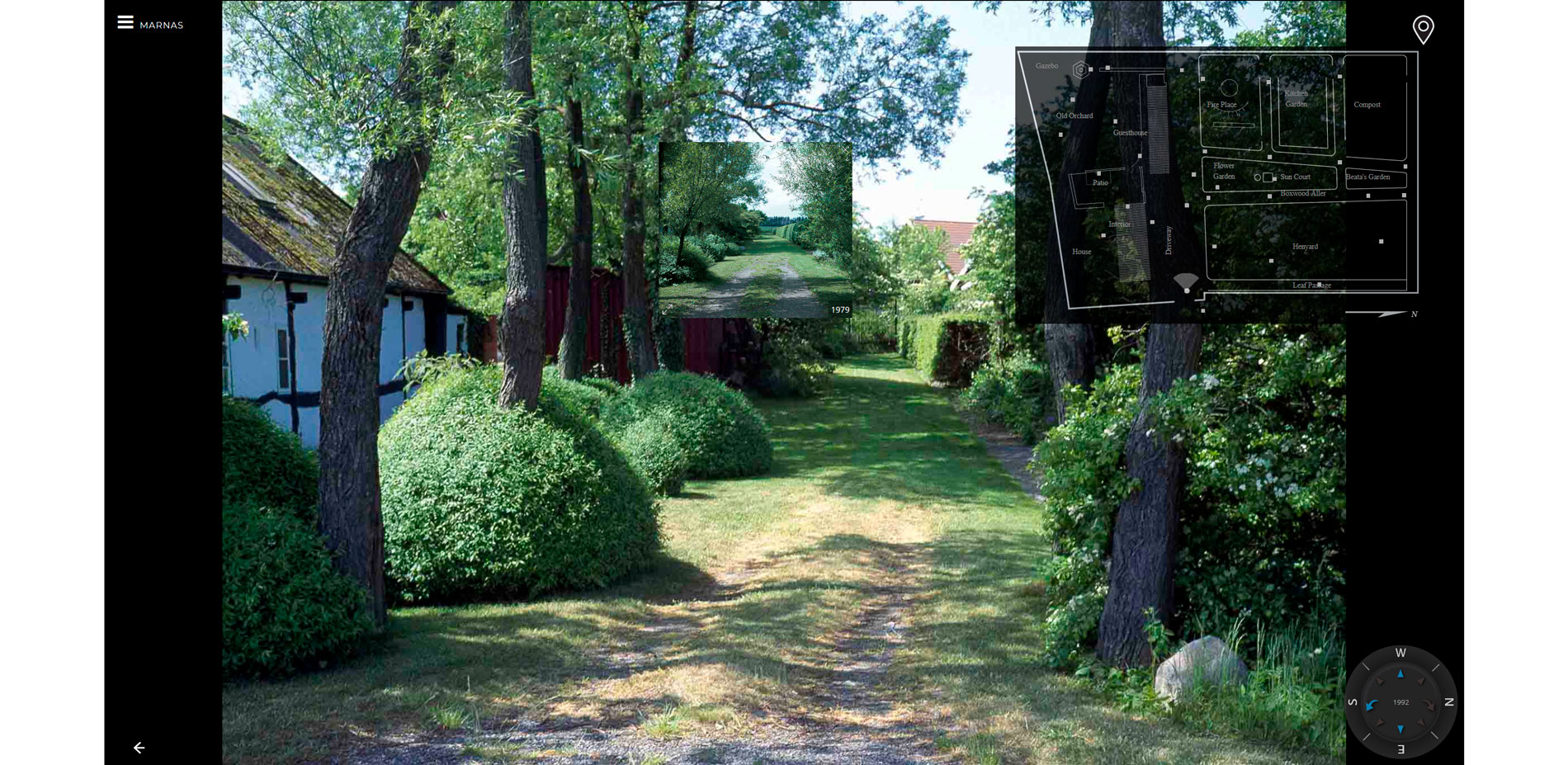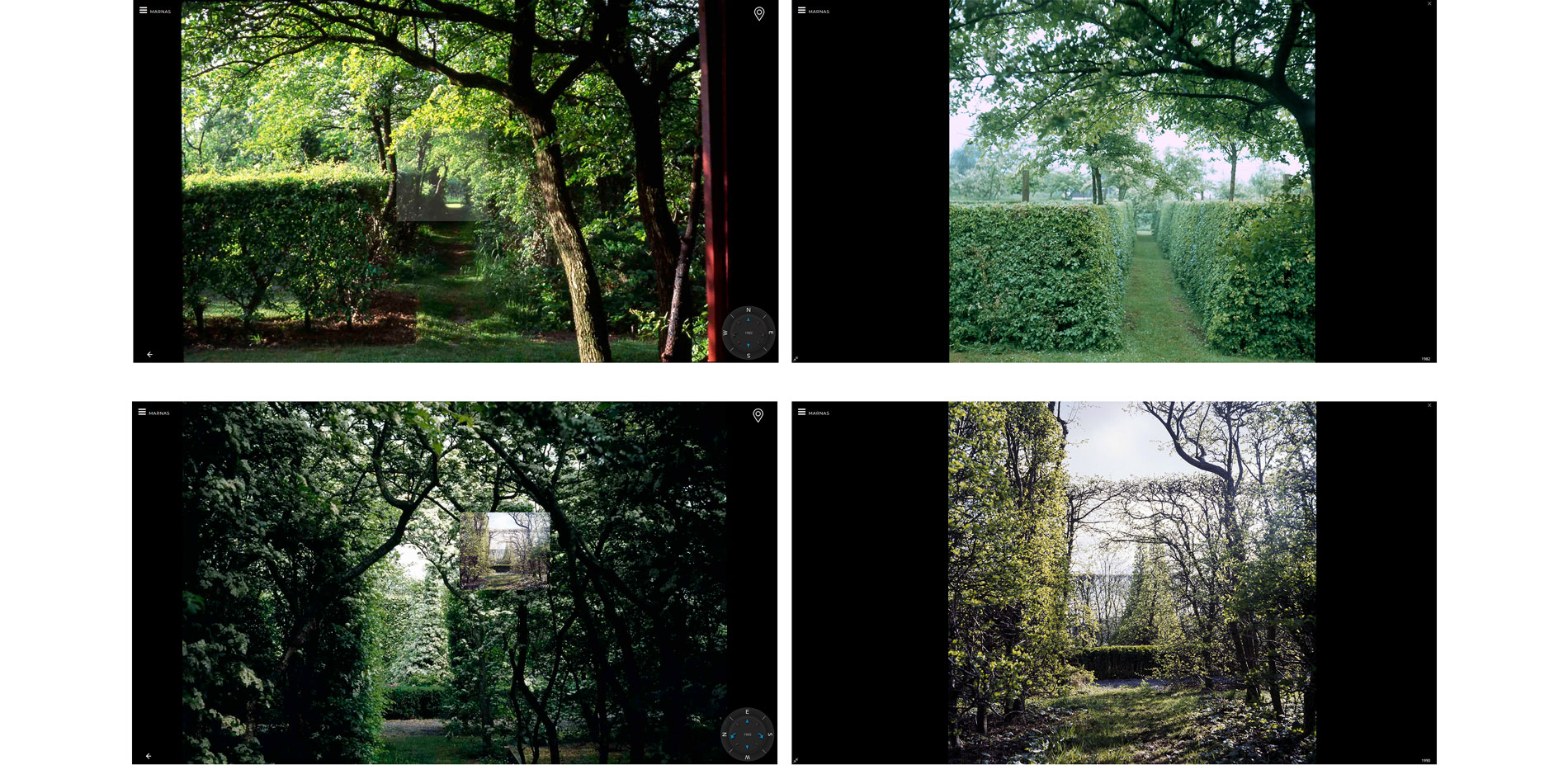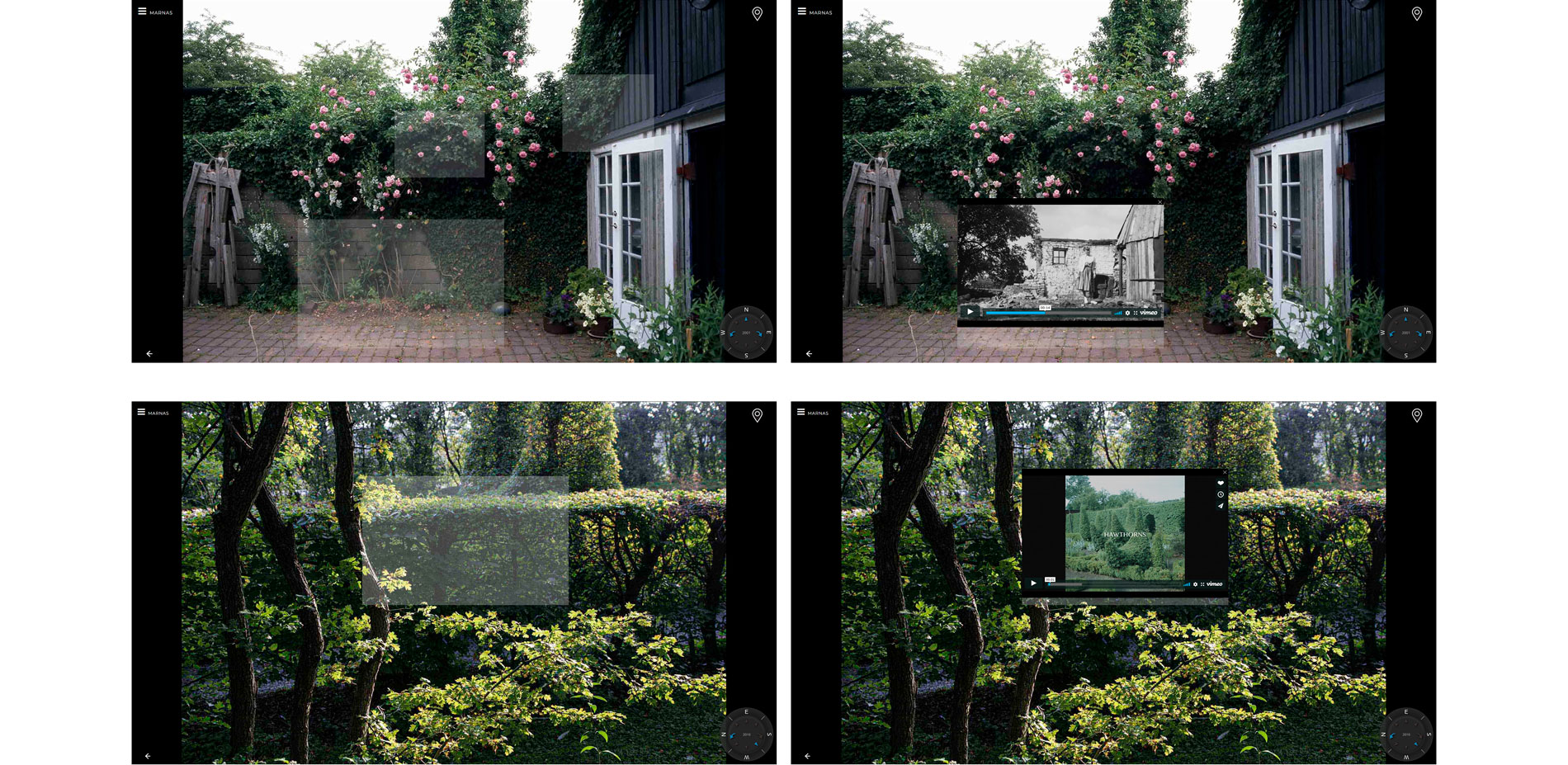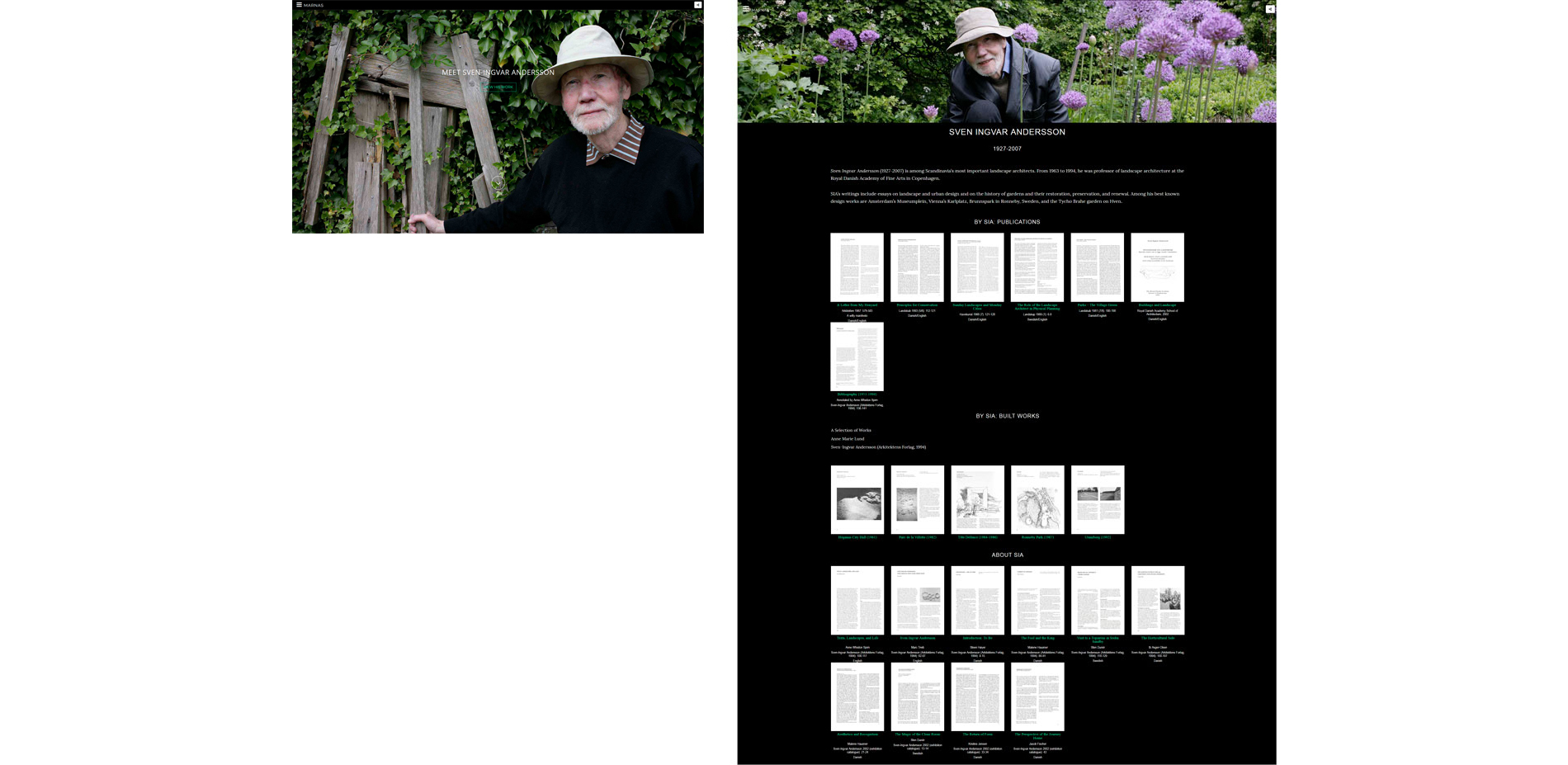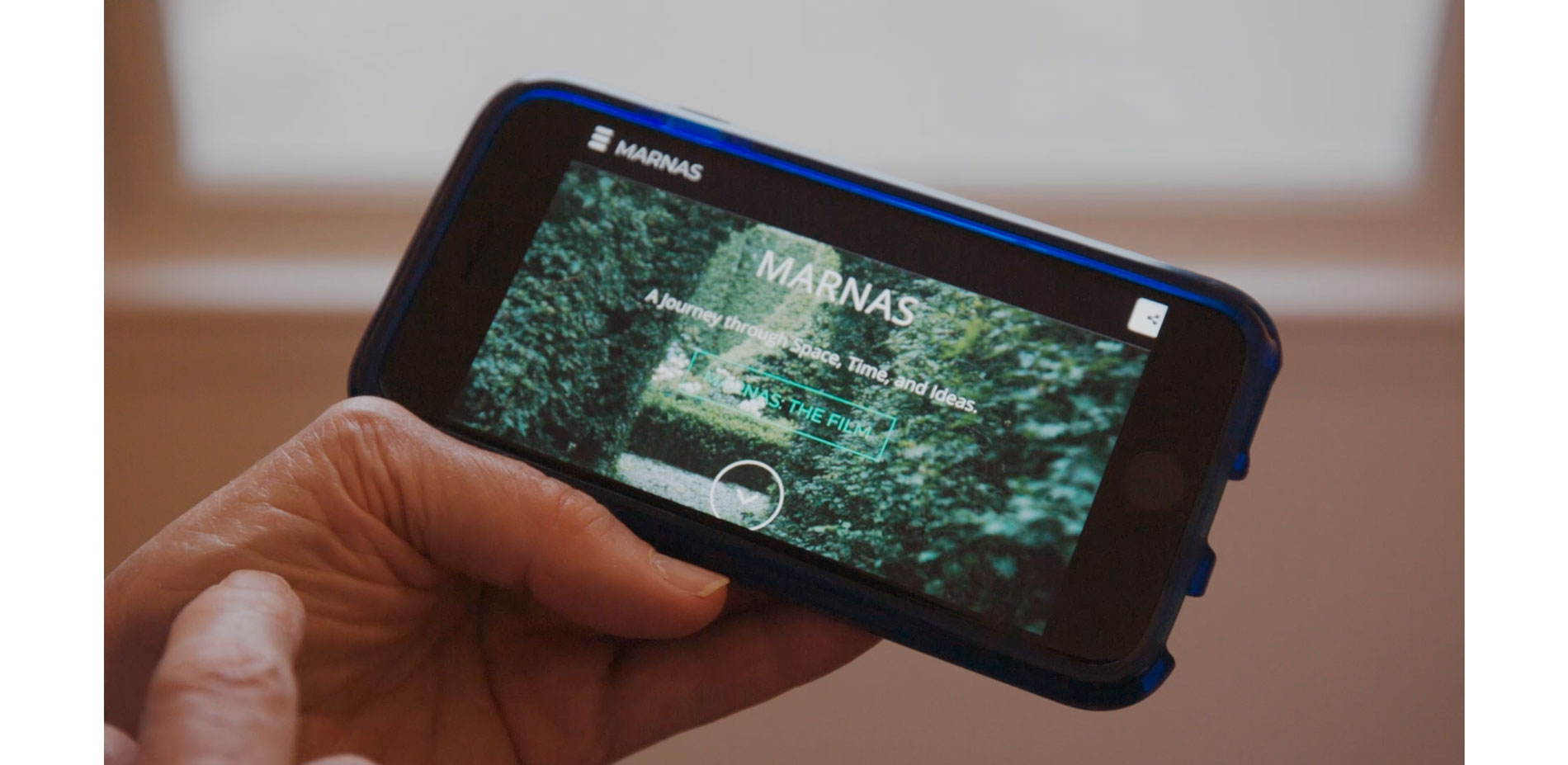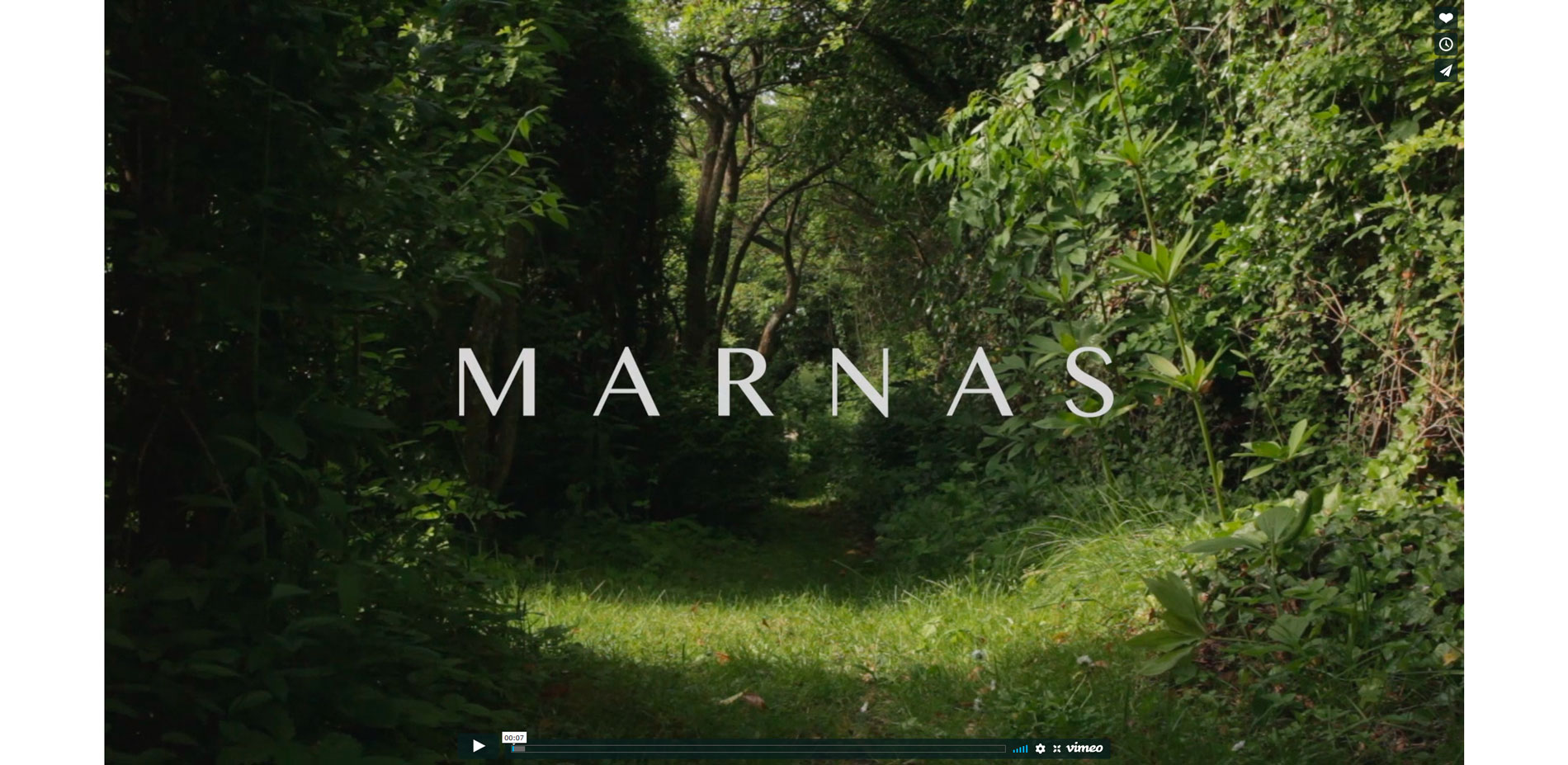Marnas: A Journey through Space, Time, and Ideas
HONOR AWARD
Communications
Undisclosed Location | Anne Whiston Spirn
They took advantage of this amazing archive Marnas had and brought it to life.
- 2018 Awards Jury
PROJECT CREDITS
Landscape Architect:
- Anne Whiston Spirn
Landscape Architect and Owner/Designer of Marnas:
- Sven Ingvar Andersson (1927 – 2007)
Multimedia:
- John Moody
Web Design:
- Zhao Ma
Web Development:
- Halla Moore
Marnas Online Archive:
- MIT Libraries
Royal Danish Academy of Fine Arts, permission to use images
Beata Engels Andersson, permission to use images
PROJECT STATEMENT
Marnas (www.marnasgarden.com) provides the first public access to the garden laboratory of master designer/theorist, Sven-Ingvar Andersson (1927-2007), who recorded his experiments there, over the course of 50 years, in thousands of photographs. This extraordinary documentation made possible the digital archive and interactive multimedia website, designed as an immersive, three- and four-dimensional experience, which enables the visitor to journey through the garden in space and time across five decades. The website evokes the magical quality of Marnas and brings alive the ideas that shaped it. The homepage unfolds in a vertical scroll through a series of gateways. One gateway invites you to take a guided tour of the garden, others, to explore on your own or to meet the designer and read his work. The goal was to create a visit to Marnas as it existed throughout Andersson's lifetime, to convey the interplay of theory and practice embodied in the garden. This multimedia project breaks new ground, enabling a new experience and understanding of landscape design as a temporal art.
PROJECT NARRATIVE
Sven Ingvar Andersson (1927-2007), practitioner and theorist, was among Scandinavia's most important landscape architects. Marnas, his own garden and summer house in southern Sweden, is a landmark design and a masterful expression of the interplay between practice and theory.
In 1965, Andersson expanded the original garden with the addition of a complex of rooms and passages bounded by clipped hedges of hawthorn. In the largest garden room, he planted fourteen hawthorn "eggs," which would eventually grow into 12-foot-high topiary "hens." In 1967, he published "A Letter from My Henyard," a manifesto in which he criticized designers for conceiving finished works with fixed details. Instead, he advocated the design of a framework within which details could evolve in response to changing circumstances, needs, and desires. For forty years, Marnas was a laboratory where Andersson explored ideas about preservation and renewal, the design of change over time, and the roles of circumstance, serendipity, and improvisation. At the end of the 1967 essay, Andersson imagines himself as an old man. Too weak to clamber up ladders and wield clippers, he sits in a garden that has transformed into a grove of hawthorns. From the 1960s to 2007, he documented this transition from clipped hedges into a freely growing grove in thousands of photographs and reflected on what he learned from this process in publications about landscape and urban design theory.
"I have a definite idea of how my henyard will end," Andersson wrote in 1967, "but that which lies between now and then is an open plan…. A lot can happen before the henyard becomes a hawthorn grove." But we know what happened, thanks to the thousands of photographs that Andersson made of Marnas from the 1950s to the 2000s: photographic sequences of passage through the garden and diverse views from the same locations in different seasons and across the years; photographs of new decisions and additions. To view these images in chronological order is to be propelled through time: to see the hawthorn "eggs" hatch into birds and then grow long necks; to see the functions of the garden "rooms" change; to watch the hedge walls grow higher, transforming into a grove.
The current project began as a digital archive of Andersson's photographs of Marnas, but, after sifting through thousands of images, I realized that there was the potential to try something new. Might it be possible, by linking hundreds of images, to chart paths through the garden, a virtual re-creation of Marnas across fifty years? Working from a plan of the garden and from memory, I selected images to create those paths and filled gaps with my own photographs from 1990-2012. To convey the intangible--the garden's magical qualities and the ideas behind the forms--I composed a series of short multimedia videos that explore the interplay among practice, theory, form, and function. The scripts for the videos are in Andersson's own words. I selected, translated, and arranged texts where he reflects on Marnas, its precedents, origins, elements, composition, plants, and ideas.
The Marnas website (www.marnasgarden.com) invites the visitor to embark on a series of journeys. The homepage unfolds via a vertical scroll through a series of gateways. One gateway invites you to take a guided tour of the garden (via multimedia videos), others, to explore on your own, meet Sven-Ingvar Andersson and read his work, or visit the digital archive. The goal was to stimulate exploration and interaction, the viewer an active participant, not a passive observer.
Landscape design is a temporal art. Composed of materials that grow and decay, subject to changing needs and fashion, landscapes cannot be frozen in time. How then, can they be preserved? How can they be designed to accommodate change? These conundrums were a preoccupation of Sven-Ingvar Andersson, which he explored in writing and built work throughout his career, particularly at Marnas.
The Digital Archive, Film and Website: Purpose and Audience
After Andersson's death, change at Marnas was inevitable. The goals of the project are 1) to convey an experience that is as close as possible to visiting Marnas as it existed during its designer's lifetime; 2) to show how the garden evolved; 3) to demonstrate how ideas are embodied in the garden; 4) to broaden public understanding of landscape design as a temporal art. "Marnas: A Journey through Space, Time, and Ideas" aspires to stimulate scholars and students, to inspire landscape architects, and to attract and delight the general public.
Value
The project provides the first public access to an important work of landscape architecture for which there are few published photographs and sparse documentation in English. It presents Marnas as a laboratory where ideas evolved in dialogue with acts of design and gardening. It describes a theory of design that is responsive to change. It provides a model for how multimedia video and the Web can create for the viewer a virtual experience of moving through a place in space and time, exploring change and the mutual shaping of ideas and place.
"Marnas: A Journey through Space, Time, and Ideas," the website and the film, premiered in Copenhagen in October 2017 and already have received significant recognition, including the invitation to contribute an essay, "The Marnas Digital Archive: Exploring Practice, Theory, and Place in Space and Time," to the Routledge Companion to Landscape Architecture.
Effectiveness of Presentation
My original intention was to write a book about Marnas, but the book became instead a multi-layered website. The self-guided tour permits a glimpse of gardens that once were, an experience afforded only through digital media. Multimedia videos afford the opportunity to bring image, word, and sound together in ways that animate the text and bring to life SIA's dialogues between ideas and place. Words convey ideas, images show how those ideas are embodied in the features and spatial experiences he created at Marnas. Sounds lend immediacy and intimacy.
Innovations and Role of Landscape Architect
Marnas is a work of scholarship and an exploration of photography, multimedia, and website design as media of inquiry and expression. This multimedia project breaks new ground and enables a new experience and understanding of landscape design as a temporal art.
As one reviewer wrote: "In MarnasGarden.com, image, text, and sound take us on an exquisite journey that cuts to the heart of dilemmas driving twenty-first century practice – given the dynamic nature of landscapes, how do we design for inevitable adaptation? How do we preserve that which must necessarily change? [name deleted]'s masterful work connects points in time, linking theory and practice in a provocative living expression that breaks new ground" (Phoebe Lickwar, FORGE Landscape Architecture).
The role of the landscape architect included:
- Fieldwork and photography at Marnas from 1990-2017
- Selection and curation of more than 600 photographs of Marnas from among thousands
- Arranging for production of high resolution scans of photographs in Danish collections and their accession into an online collection at MIT Libraries and SAHARA (Society of Architectural Historians Architecture Resource Archive)
- Review and translation of texts in Swedish and Danish by Sven-Ingvar Andersson
- Production of multimedia videos, including composition of scripts, selection and sequencing of photographs
- Design of the self-guided tour
- Design of the website as a platform for the videos and self-guided tour
